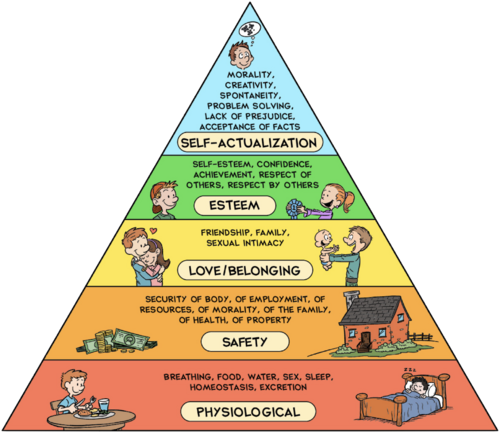Need-Based Theories of Motivation
Contents |
Abstract
Project teams are comprised of team members with diverse backgrounds, expectations and individual objectives. The overall success of a project depends on the project team's commitment, which is directly related to their level of motivation.[1] These are able to affect all aspects of the result that will be achieved by a project, including a direct impact to the constraints of scope, time and cost.
Motivation encompasses the psychological forces[2] within a person that determine:
- The direction of a person's behaviour in an organisation, which refers to the many possible behaviours a person could engage in.
- A person's level of effort, which refers to how hard people work.
- A person's level of persistence in the face of obstacles, which refers to whether people keep trying or give up.
Motivating in a project environment involves creating an environment to meet project objectives while providing maximum satisfaction related to what people value most.[1] This may include:
- Pay
- Job security
- Autonomy
- Responsibility
- The pleasure of doing interesting work
- A feeling of accomplishment
- Recognition
Knowing this, it is in the project manager's best interest to understand the demotivation cause in order to drive toward project success though the creation and maintenance of a motivating environment for all members of the team.[3]
This article focuses on need-based theories of motivation which form the basis of in which way project managers help people to satisfy their needs at work. It exemplifies the application of these theories and mentions the limitations.
Need Theories
A need is a requirement or necessity for survival and well-being. The basic premise of need theories is that people are motivated to obtain outcomes at work that satisfy their needs. Need theories suggest that to motivate a person to contribute valuable inputs to a job and perform at a high level, a project manager must determine what needs the person is trying to satisfy at work and ensure that he or she receives outcomes that help to satisfy those needs in return for performing at a high level and helping the organisation achieve its goals.[2]
There are several need theories, of which Maslow's Hierarchy of Needs, Alderfer's ERG Theory and McClelland's Need Theory is described briefly below. These theories may be hard to use directly, but give the project manager an understanding of how he or she has to take action in order to create a motivating environment which fulfil people's needs.
Maslow's Hierarchy of Needs
In 1943 Abraham Maslow stated in the article "A Theory of Human Motivation" that all people seek to satisfy five stages of human needs, which are:
- Physiological needs
- Safety needs
- Belongingness needs
- Esteem needs
- Self-actualisation needs
These needs are set up in a particular order, better known as Maslow's hierarchy of needs, which is illustrated in the figure below where the stages are described in more details.
Maslow argued that the lowest-level needs must be met before at person will strive to satisfy needs higher up in the hierarchy. Once a need is satisfied, it ceases to operate a source of motivation.[2]
Although this theory identifies needs, which are likely to be important sources of motivation for many people, it has been under criticism. The problem is that more than one stage may be motivational at one time.
Alderfer's ERG Theory
Clayton Alderfer observed that individual needs differ according to the circumstances. They do not need to move in an order of progression.
In 1969 he presented his ERG Theory in the article "An Empirical Test of a New Theory of Human Need", which is about three stages of needs:
- Existence needs
- Relatedness needs
- Growth needs
McClelland's Need Theory
- Need for achievement
- Need for affiliation
- Need for power
The need for achievement is the extent to which an individual has a strong desire to perform challenging tasks well and to meet personal standards for excellence. The need for affiliation is the extent to which an individual is concerned about establishing and maintaining good interpersonal relations, being liked and having the people around him or her get along with each other. The need for power is the extent to which an individual desires to control or influence others.[2]
Application
Limitations
Annotated bibliography
References
- ↑ 1.0 1.1 Project Management Institute. (2013). A Guide to the Project Management Body of Knowledge (PMBOK® Guide) (5th ed.).
- ↑ 2.0 2.1 2.2 2.3 Jonas, G. R. and George, J. M. (2015). Essentials of Contemporary Management (6th ed.).
- ↑ Peterson, T. M. (2007). Motivation: How to increase project team performance. Paper presented at PMI® Global Congress 2007. https://www.pmi.org/learning/library/motivation-increase-project-team-performance-7234
